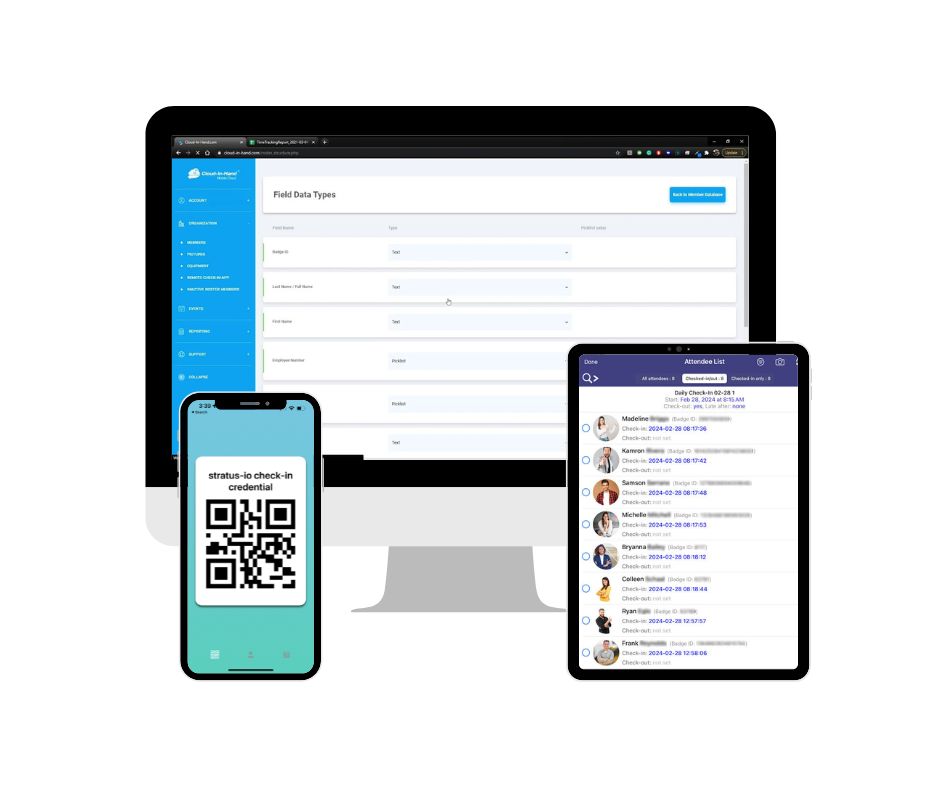Why Every Second Counts During an Emergency

With no roster in hand, you’re suddenly left in a state of uncertainty. You have no way of knowing who has been accounted for and who might still be trapped inside. Chaos emerges as people eagerly try to conduct manual headcounts, moving from group to group. Meanwhile, the fire is spreading, and you feel every second slipping away, knowing each moment lost could endanger lives. In times like these, you realize how crucial it is to have an efficient emergency headcount system — because in emergencies, every second counts.
Why Does Every Second Count During an Emergency ?
Let’s revisit the initial scenario: if a fire breaks out in your building, quick action is critical. To put it in perspective, it takes 30 seconds for a fire to gain speed and start to double in size, turning a manageable situation into a life-threatening one. Any delay in response can cause serious damages or injuries. That’s why it’s crucial to ensure that every employee evacuates the building promptly. The longer you wait, the greater the risk. So, you must be prepared with the right tools to ensure a swift and efficient evacuation.
The Power of Software Systems in Emergency Preparedness
In today’s technology-driven world, companies have the opportunity to integrate robust digital tools into their emergency preparedness plans. Time and attendance softwares can significantly streamline emergency response efforts, transforming a previously inefficient process into a swift, streamlined system that saves time.
These systems offer a range of features designed to accelerate evacuation processes and keep you informed. For example, instead of requiring physical confirmation to mark someone as safe, employees can use their phones to update their status. A muster captain can be on the opposite side of the building and still receive instant notifications when someone has checked-in as safe. This is just one of the many innovative features!
To learn more about the various features a robust system can offer to enhance your emergency preparedness, explore Stratus-io Time and Attendance software, and see how it can make a critical difference in your safety strategy.
Stratus-io : Multiple Check-in Methods
Stratus-io is an advanced emergency headcount solution designed to streamline safety protocols during critical situations. It provides a range of check-in methods to ensure quick, accurate, and efficient attendance tracking in emergencies, catering to various needs and environments. The available check-in methods include:
- Mobile Apps (Android/iOS): The Stratus-io mobile apps enable individuals to check in directly from their mobile devices. This flexibility allows for quick and convenient check-ins, even in challenging environments.
- RFID and NFC Smart Badges: With the IdChamp® NF4x, a cross-platform wireless mobile NFC-RFID reader, Stratus-io can read nearly any access control credential badge type, including HID PROX and iClass Seos.
- Barcodes: For fast and accurate scanning, the Scanfob® PX-20 2D+1D wireless Bluetooth (BLE) barcode scanner delivers unmatched performance. This method is compatible with iOS devices like iPad, iPhone, Android Tablets and Phones, Windows 10 PCs, and more.
- Kiosk: You can check-in using a self-service kiosk. This setup is perfect for high-traffic areas, such as building entrances or emergency assembly points, where quick processing is essential.
Client Testimonial: Toshiba’s Experience with Stratus-io
Client testimonials highlight the real-world impact of Stratus-io, illustrating how its features translate into meaningful results during critical situations. Derius Goudeaux, an Environmental Health & Safety Specialist at Toshiba, shares his experience:

This testimonial from Toshiba demonstrates the transformative power of Stratus-io in emergency preparedness. By leveraging its user-friendly design and seamless integration capabilities, companies can effectively reduce the time and effort required to account for employees during an emergency, thereby enhancing overall safety and operational efficiency.
Conclusion
In emergencies, every second truly counts. Traditional methods like printed rosters and manual check-ins are not only slow but can also lead to dangerous delays. Stratus-io Time and Attendance software brings a modern solution to this challenge. It offers a variety of check-in methods that ensure everyone is accounted for quickly and accurately. Whether it’s through mobile apps, RFID badges, or kiosks, Stratus-io streamlines the entire process. This way, you only have to focus on what matters most—getting everyone to safety. Companies like Toshiba have already seen the benefits of integrating time and attendance software. Don’t wait until it’s too late and enhance your emergency preparedness plan with Stratus-io today!

